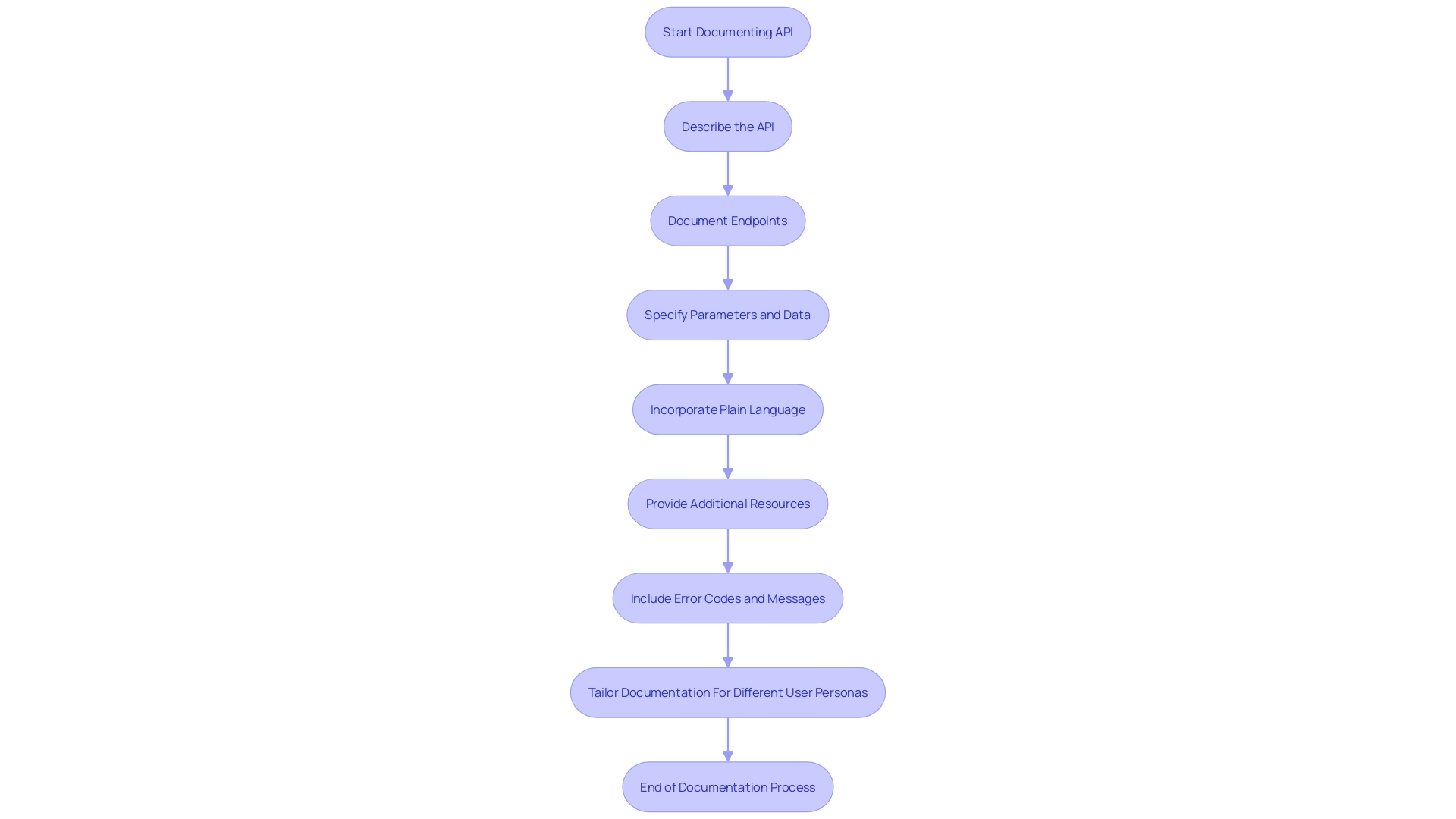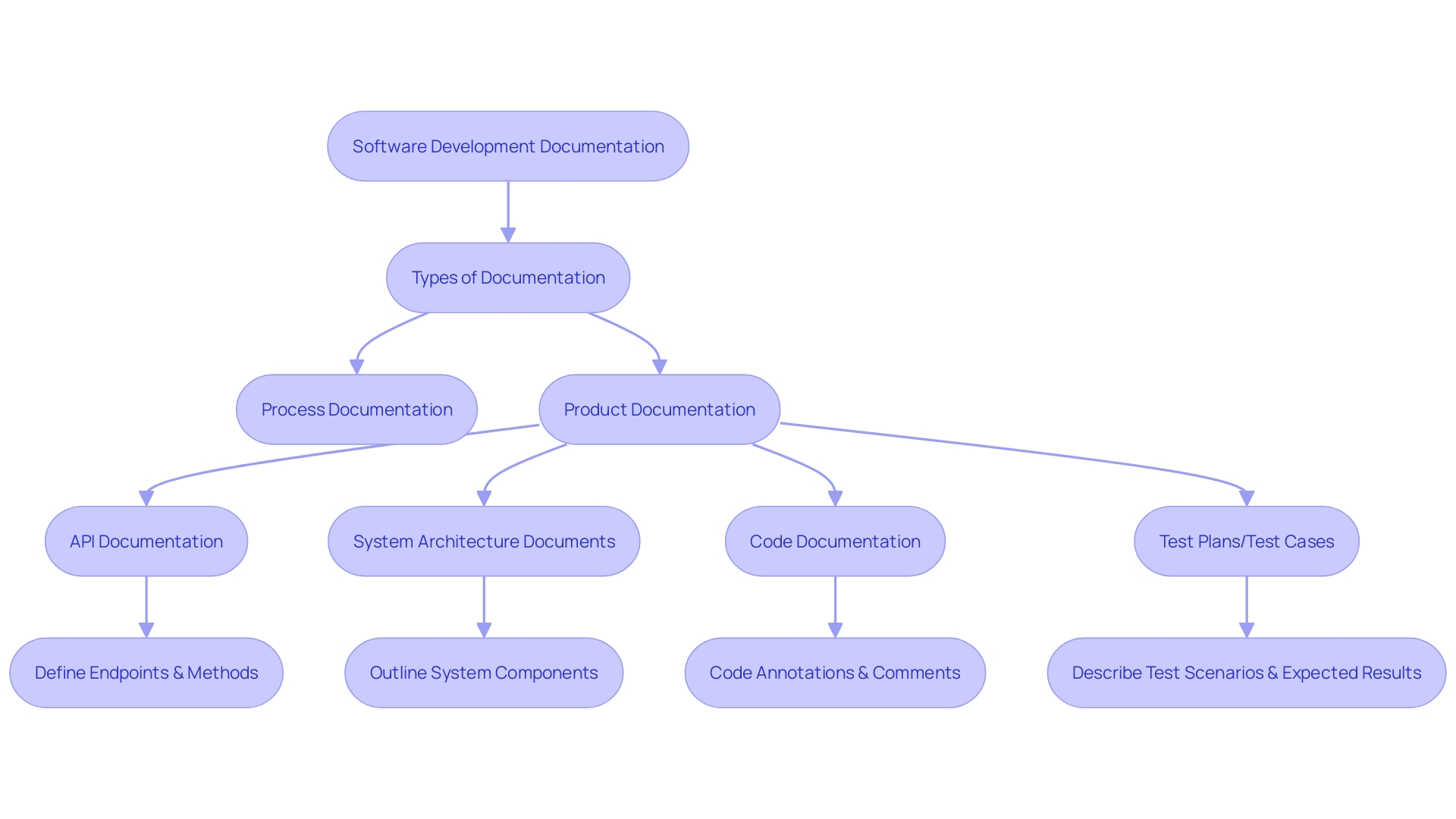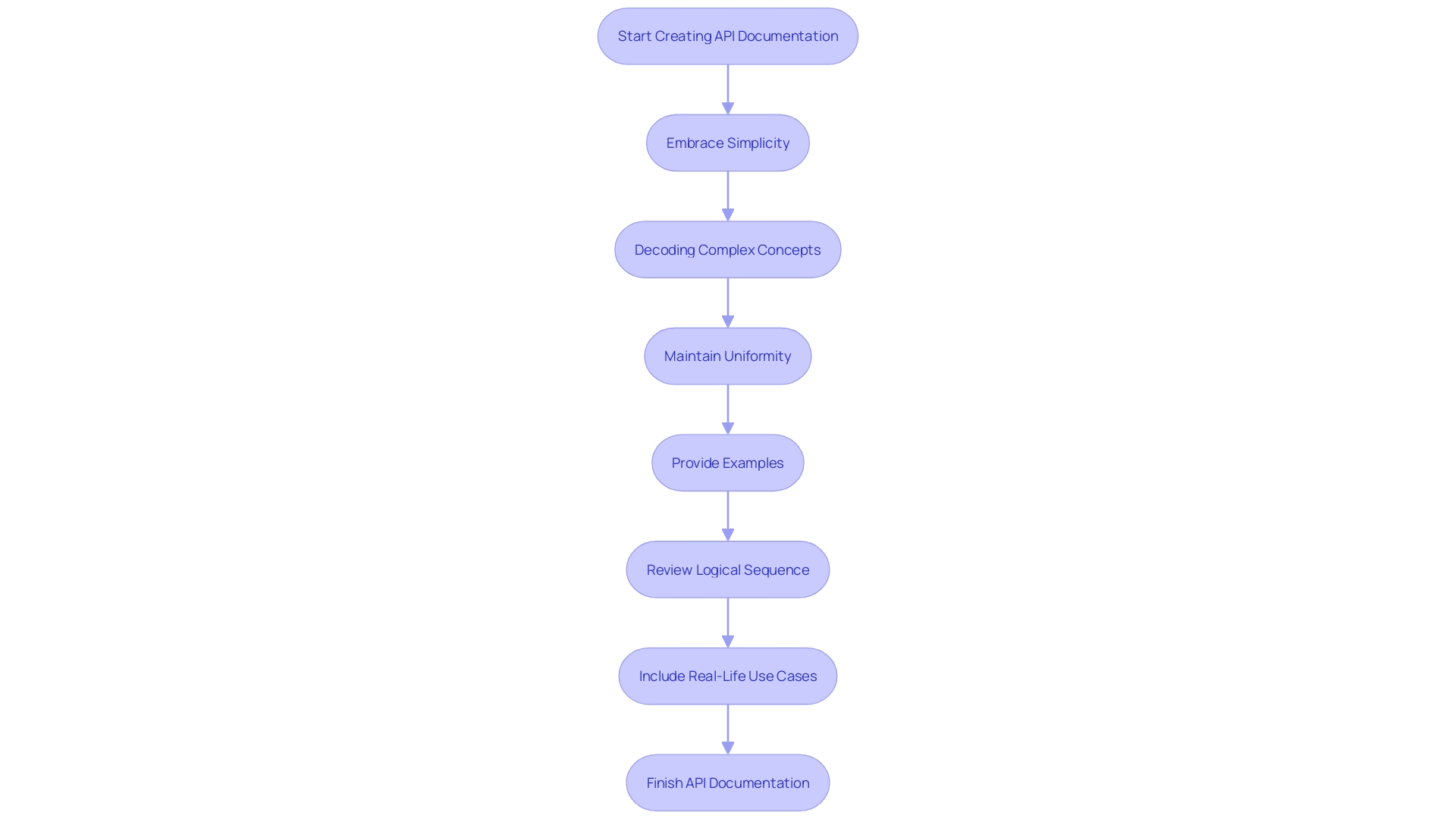Introduction
API documentation is an essential compass in the software development landscape, guiding developers through the often intricate terrain of system integration. At the heart of this lies the README file—a beacon illuminating the path forward with a succinct project overview, setup instructions, examples, and more. It is the first encounter developers have with your codebase, and its clarity can make the difference between seamless integration or a frustrating maze of guesswork.
The art of crafting API documentation is akin to creating an intricate map of the digital landscape. It must detail the technical topography—endpoints, request/response formats, authentication protocols, and error codes—while remaining concise and avoiding the pitfalls of excessive jargon. Each line of documentation should serve as a clear signpost, pointing developers to the next step in their journey.
Recent security concerns underscore the importance of meticulously designed APIs. According to Traceable and the Ponemon Institute, 60% of organizations in the U.S. and Europe experienced breaches due to API vulnerabilities over two years. Efficient documentation not only streamlines integration but also fortifies the fortress of data privacy and security.
To ensure that your API documentation serves its vital function, remember the wisdom of keeping it focused and purposeful. Like a well-drawn map, it should reveal the essence of your software's capabilities, allowing developers to navigate with confidence and precision, and ultimately, contributing to the collective efficiency of the development community.
Importance of Documentation in Software Development
API documentation is an essential compass in the software development landscape, guiding developers through the often intricate terrain of system integration. At the heart of this lies the README file—a beacon illuminating the path forward with a succinct project overview, setup instructions, examples, and more. It is the first encounter developers have with your codebase, and its clarity can make the difference between seamless integration or a frustrating maze of guesswork.
The art of crafting API documentation is akin to creating an intricate map of the digital landscape. It must detail the technical topography—endpoints, request/response formats, authentication protocols, and error codes—while remaining concise and avoiding the pitfalls of excessive jargon. Each line of documentation should serve as a clear signpost, pointing developers to the next step in their journey.
Aluisio, a seasoned software engineer, emphasizes the significance of tailoring documentation strategies to the unique contours of each project. A vivid example comes from YNAB's integration challenges, where clarity in API documentation is central to linking disparate financial tools and creating a cohesive user experience.
Recent security concerns underscore the importance of meticulously designed APIs. According to Traceable and the Ponemon Institute, 60% of organizations in the U.S. and Europe experienced breaches due to API vulnerabilities over two years. Efficient documentation not only streamlines integration but also fortifies the fortress of data privacy and security.
To ensure that your API documentation serves its vital function, remember the wisdom of keeping it focused and purposeful. Like a well-drawn map, it should reveal the essence of your software's capabilities, allowing developers to navigate with confidence and precision, and ultimately, contributing to the collective efficiency of the development community.

Types of Documentation
Software development is bolstered by various documentation types, each designed to streamline the development and integration processes. Among them:
-
API Documentation: This critical resource houses comprehensive details like endpoints, parameters, request/response formats, and authentication methods. It enables developers to seamlessly interact with the API and assimilate it into their applications. For instance, Infobip's API reference provides links to complex concepts, aiding beginners in navigating the API landscape effectively.
-
System Architecture Documents: Offering a bird's-eye view, these documents delineate the system's architecture, spotlighting the components and their interplay. They are instrumental in illustrating integration points, thus clarifying the system's setup for developers.
-
Code Documentation: Embedded directly within the code, this form of documentation elucidates the code's intent, functionality, and application. It's an indispensable tool for developers to understand the inner workings and integrate components with confidence.
-
Test Plans and Test Cases: Testing documentation, encompassing strategies, plans, and specific cases, is essential to validate the proper functioning of integrations. It assists developers in confirming correct operation and pinpointing any issues.
The evolution of software documentation is evident, as seen in the rise of automated quality control and the move towards more dynamic, interactive API documentation that allows direct testing within the documentation itself. These advancements provide developers with immediate feedback and a practical environment for experimentation, enhancing the understanding and implementation of APIs.
Keeping documentation concise, clear, and focused on the "why"—as much as the "what"—is crucial. Good documentation should welcome new users with clear onboarding instructions, leveraging user personas to tailor the experience. As emphasized by an industry leader, API documentation should enable users to quickly grasp how to start interacting with the API and leverage its benefits.
The significance of software documentation cannot be overstated. Serving as a roadmap, it guides the development process, sets expectations, and ensures comprehension of the software's functionality and purpose. Without it, projects may succumb to disorganization and chaos.
Therefore, software documentation is not just a facet of development; it is its very foundation.

API Documentation
API documentation acts as the instruction manual for effectively utilizing an API, akin to the user manual of a new laptop that details its operation and features. This 'user manual' for APIs is essential for developers to comprehend and leverage the API in their software, guiding them through the integration process with less confusion and more precision.
Creating API documentation involves several critical elements to ensure clarity and usability:
- Endpoint Descriptions: Each API endpoint must be documented with a clear purpose and the expected inputs and outputs, allowing developers to understand their functionality at a glance.
- Parameter Information: Detailing the required parameters for each endpoint, including their data types and any necessary validation rules, equips developers with the specifics needed to make correct API calls.
- Request and Response Examples: By providing tangible examples of API requests and responses, developers can model their integration on proven formats, reducing the likelihood of errors.
- Authentication Methods: Clearly outlining the authentication and authorization processes required to use the API safeguards against unauthorized access and informs developers of the security protocols in place.
- Error Handling Guidance: A section dedicated to error handling, complete with possible error codes, ensures developers can troubleshoot effectively and understand the API's response in various scenarios.
In practice, as seen with Chick-fil-A's Customer Technology team, the absence of well-documented API contracts led to a need for excessive collaboration and inefficiencies, underscoring the significance of detailed API documentation. Moreover, documentation should be organized logically, starting with the basics and gradually introducing more complex information, to make it accessible and easy to navigate.
Statistics reinforce the importance of documentation in software development, serving as a roadmap that guides the process, sets expectations, and aligns all stakeholders on the software's functionality and purpose.
Ultimately, good API documentation is the first element potential users encounter, and it should quickly and effectively onboard them to the offered benefits. This not only streamlines the integration process but also enhances the developer experience, leading to a smoother, more efficient development workflow.

Using Clear and Concise Language
To create API documentation that stands as a beacon of clarity and utility, one must weave language and structure with a meticulous hand. The essence lies in distilling complex technical concepts into an accessible format that resonates with developers from all backgrounds. Here's how to elevate your documentation:
- Embrace simplicity: Shun the siren call of intricate jargon and acronyms. Opt for plain language that welcomes both seasoned developers and those less versed in technical dialects.
- Decode the complex: When faced with intricate integrations, segment them into digestible explanations. This approach not only aids comprehension but also makes the learning curve less steep for newcomers.
- Uniformity is key: A standardized lexicon throughout your documentation avoids confusion and streamlines the cognitive process for the reader.
- Illuminate with examples: Concrete examples act as lighthouses, guiding developers through the murky waters of abstract concepts. They anchor the theoretical in the practical, offering a glimpse of real-world application.
Incorporating these principles is more than a mere exercise in good writing; it is a response to the growing exigencies of cybersecurity within the API landscape. As recent reports indicate, an alarming 78% of cybersecurity teams have encountered API-related security incidents within a year. This underlines the necessity for clear, comprehensive documentation that not only facilitates integration but also fortifies against potential breaches.
Furthermore, the pursuit of clarity in API documentation is akin to crafting a user manual for a complex device. It serves as the nexus between the software and its users, enabling them to harness the API's full potential. One must always question, 'Does this sentence directly address a reader's query?'
or 'Can this concept be elucidated with a simplistic use case?' By adopting this introspective approach, one ensures that each segment of the documentation coalesces smoothly into a coherent whole.
Thus, by adhering to these guidelines and supporting the narrative with relevant semantics and engineering principles, one can construct API documentation that is not only informative and comprehensible but also a vital tool in the developer's arsenal.

Conclusion
In conclusion, API documentation is essential for guiding developers through software development and system integration. It serves as a compass, providing clarity and instructions for seamless integration. Effective documentation fortifies data privacy and security, addressing the increasing concerns surrounding API vulnerabilities.
Tailored documentation strategies, including various types of documentation such as API documentation, system architecture documents, code documentation, and test plans, streamline the development process. Advancements in software documentation, such as automated quality control and dynamic, interactive API documentation, enhance developers' understanding and implementation of APIs.
To create effective API documentation, use clear and concise language. Embrace simplicity, decode complex concepts, maintain uniformity, and provide illuminating examples. These principles enhance comprehension, improve the developer experience, and contribute to a more efficient development workflow.
In summary, API documentation serves as a vital resource, guiding developers through the intricate landscape of software development. By creating focused and purposeful documentation, organizations can ensure seamless integration, fortify data privacy and security, and contribute to the collective efficiency of the development community.
Frequently Asked Questions
What is API documentation in software development?
API documentation is a comprehensive guide that helps developers understand how to effectively use an API. It includes details about endpoints, parameters, request/response formats, authentication methods, and error handling. It serves as an instruction manual, akin to a user manual for a laptop, detailing operation and features for proper integration.
Why is the README file important in software development?
The README file is crucial because it serves as the first point of contact developers have with a codebase. It provides a project overview, setup instructions, examples, and more, offering clarity and guidance that can significantly impact the ease of integration.
How should API documentation be crafted?
API documentation should be detailed yet concise, avoiding excess jargon. It should clearly map out the technical aspects of the API, such as endpoints, request/response formats, and error codes. Each line should act as a clear signpost, guiding developers through their integration journey.
What impact can good API documentation have?
Good API documentation can streamline the integration process, improve data privacy and security, and contribute to the overall efficiency of the development community. It serves as a roadmap, guiding the development process, setting expectations, and ensuring comprehension of the software's functionality and purpose.
What are some types of software documentation?
Types of software documentation include: 1. API Documentation: Details of an API's endpoints, parameters, and other technical aspects. 2. System Architecture Documents: A high-level overview of a system's architecture and components. 3. Code Documentation: Annotations within the code that explain its functionality and usage. 4. Test Plans and Test Cases: Documentation for testing strategies, plans, and specific cases to ensure correct operation.
What elements are included in creating API documentation?
Key elements of API documentation include: - Endpoint Descriptions: Purpose, inputs, and outputs of each API endpoint. - Parameter Information: Data types and validation rules for parameters. - Request and Response Examples: Sample API requests and responses. - Authentication Methods: Processes required for secure API access. - Error Handling Guidance: Information on error codes and troubleshooting.
What is the role of clear and concise language in API documentation?
Using clear and concise language makes API documentation accessible to a wider range of developers, including those less versed in technical terminology. It helps to decode complex integrations and provides uniformity and concrete examples to guide developers through the integration process.
How does API documentation contribute to cybersecurity?
Well-crafted API documentation that clearly outlines authentication methods and error handling can help prevent security breaches by guiding developers through proper API usage and fortifying against unauthorized access.
What is the significance of YNAB's integration challenges mentioned in the article?
YNAB's integration challenges highlight the importance of clear API documentation in linking different financial tools and creating a cohesive user experience. It demonstrates that clarity in documentation is central to successful system integration.
How has software documentation evolved recently?
Software documentation has evolved to include automated quality control and more dynamic, interactive documentation that allows for direct testing within the documentation itself. This provides immediate feedback and a practical environment for developers.




